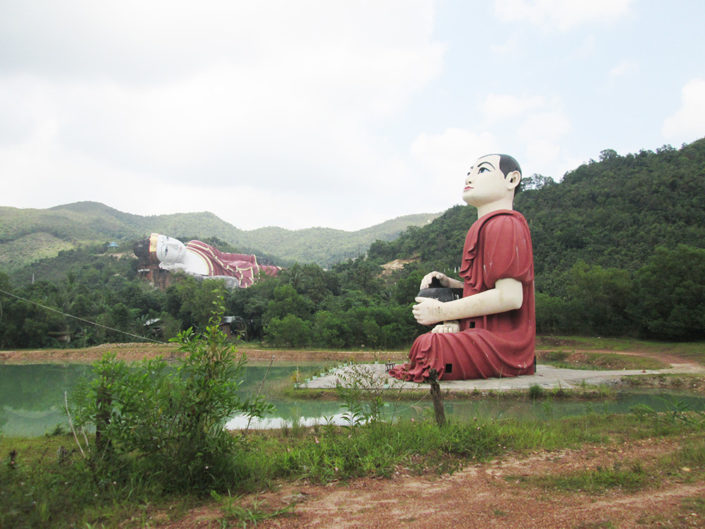Mawlamyine (Moulmein)
Mawlamyine (Moulmein) – First Capital of British Burma
“By the old Moulmein pagoda, lookin’ lazy at the sea
There’s a Burma girl a-settin,’ and I know she thinks o’ me…”
This is opening lines of “Mandalay”, a well-known poem of English language written by British writer Rudyard Kipling. Located approximately 8 hour drive south of Yangon (300 km), this charming little town has a legendary name of Mawlamyine (Moulmein formerly). It is surrounded by the Salween River and hills with golden stupas. Its location is one of the most beautiful in Burma.
The Moulmein name is literally translated as “eye lost” because a Mon king lost his one eye. During the period of 1827 to 1852, Mawlamyine (Moulmein) – first capital of British Burma was mainly used for the trade of teak and rice by sea. Mawlamyine has now sunk into a fallen splendor that makes it endearing. Its faded colors render it old-fashioned but charming. This was where Rudyard Kipling wrote his famous poem “The Road to Mandalay”. Today Mawlamyine is the third largest city of Burma, the capital of Mon State and currently has a little over half a million inhabitants. The majority of them are Mons. Ethnic minorities are composed of Burmese, Anglo-Burmese, Karens, Indians and Chinese.
There are many tourist attractions in Mawlamyine. This first capital of British Burma seems frozen in time: its bustling port, temples and churches have hardly changed since colonial times. The attraction of this site lies in the fact that it has very few tourists compared to those you have already seen. You will love discovering the picturesque markets, strolling the shopping areas and on the banks of the Salween watching the river life with its many ships and ferries.
The regions around Moulmein are equally interesting; roads running through rice fields, flanked by towering palms are beautiful. Not far away, you can also discover small tropical islands like Bilu Kyun “the island of the Ogre”. It is located in front of the city, in the estuary of Salween. It is the largest inhabited island of Moulmein with some eighty villages. The people, the Mon, earn their livings mainly from agriculture and fishing. You can also find local crafts such as the production of school slate, natural rubber and bricks.
This region and its inhabitants, with surprising authenticity, will appeal to travelers looking for an authentic Burma.














